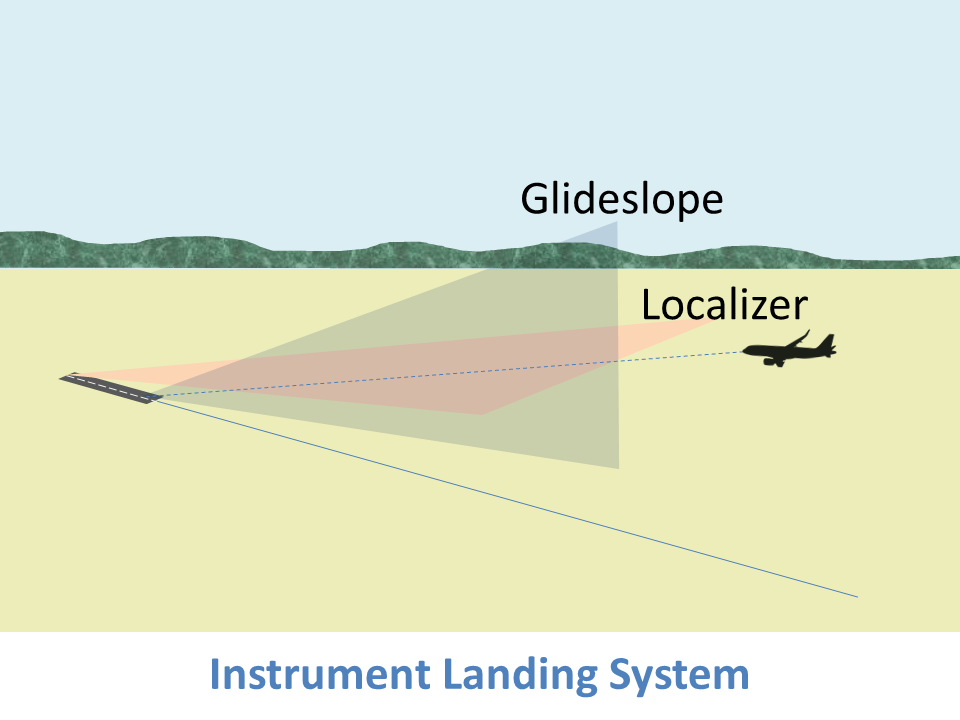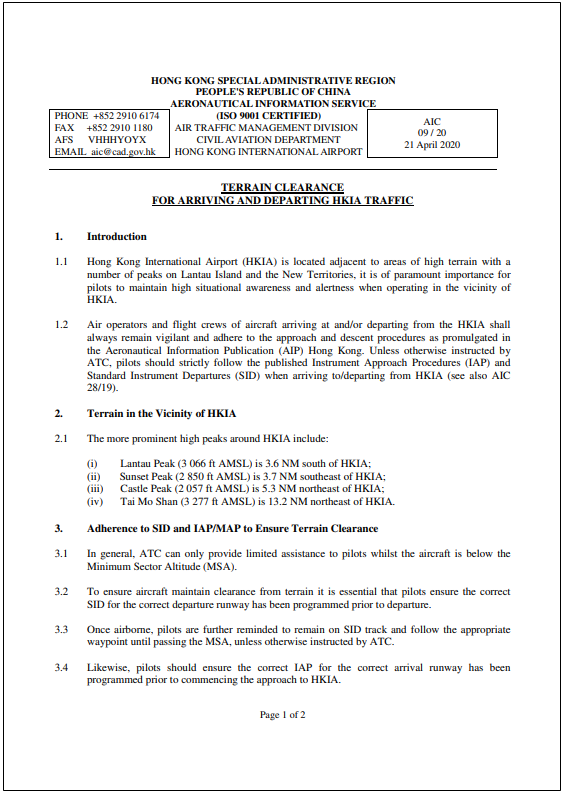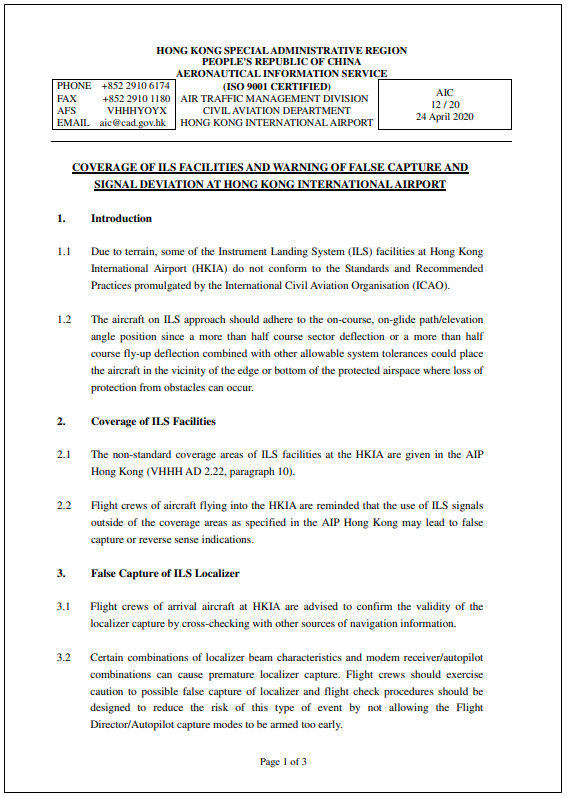Failure to Capture Localizer Guidance
By Strategic Safety Office, Civil Aviation Department
Introduction
Instrument Landing System (ILS) is the primary approach procedure at Hong Kong International Airport (HKIA). Through the use of ILS, aircraft are able to track both the localizer (LOC) and glideslope (G/S) signals and guide the aircraft towards the runway on the desired horizontal and vertical approach profile.

Events of failure to capture LOC guidance
From June 2019 to April 2020, a number of events were recorded involving Boeing B787-series (B787) aircraft not being able to properly capture and follow the LOC guidance when conducting ILS approaches into HKIA, thus overshooting the extended runway centreline when intercepting the LOC track.
During the events, the aircraft were under positive control of the pilots and direct communications between Hong Kong Air Traffic Control (ATC) and the pilots were maintained at all times. The flight profiles were eventually corrected under ATC’s continuous surveillance monitoring.
Safety actions by Civil Aviation Department (CAD)
CAD has been closely monitoring the situation and has taken proactive safety actions to address the issue. ATC recordings during the events were played back for analysis and it was noted that standard ATC procedures had been followed. Other ILS approaches during the same time periods were also reviewed for comparison and no irregularity was observed.
To verify signal integrity of the ground based CNS equipment including the ILS, flight inspections were arranged to measure the accuracy of the localizer and glideslope signals. The results confirmed that the ILS was performing satisfactorily.
Records also showed that there was no non-compliance with airport height restriction requirements and no alert was issued by the height monitoring system during the events.
It cannot be overemphasised that for airports built with surrounding terrain restrictions such as HKIA, deviations from the published approach procedures, if not picked up and corrected by pilots or ATC in a timely manner, may put the aircraft in the vicinity of the edge or bottom of protected airspace which may result in a loss of protection from obstacles or terrain.
CAD has been working closely with industry partners such as the operators involved, the aircraft manufacturer and relevant National Civil Aviation Authorities (NCAAs). While working on a resolution to the issue, an Autopilot Flight Director System (AFDS) software anomaly was identified to have contributed to these events.
While a fix is being formulated by the aircraft manufacturer, CAD has taken immediate safety actions to mitigate the risks involved and to prevent recurrence, including alerting all relevant Hong Kong airspace operators and pilots operating into HKIA and temporarily amending ATC procedures. These actions are summarised as follows:-
It is also noted that the Federal Aviation Administration (FAA) issued a Special Airworthiness Information Bulletin on 24 September 2020 informing owners and operators of B787 aircraft of the potential AFDS failure to capture the LOC during ILS approaches and the recommended actions as outlined in the Flight Crew Operations Manual Bulletin issued by the aircraft manufacturer.
Safety enhancements
CAD has completed a thorough review of the events concerning the failure of B787 aircraft to capture LOC guidance. This case illustrates that an effective safety management process has enabled early identification of possible hazards. Effective communication and coordination amongst stakeholders are equally important for the successful implementation of safety enhancements and resolution of safety concerns.
Before a rectification of the software issue is available which is expected to be in Q1 2021, and effectively implemented, the situation will continue to be managed in a cautious manner and CAD will maintain close monitoring of such anomalies and the associated trend.



